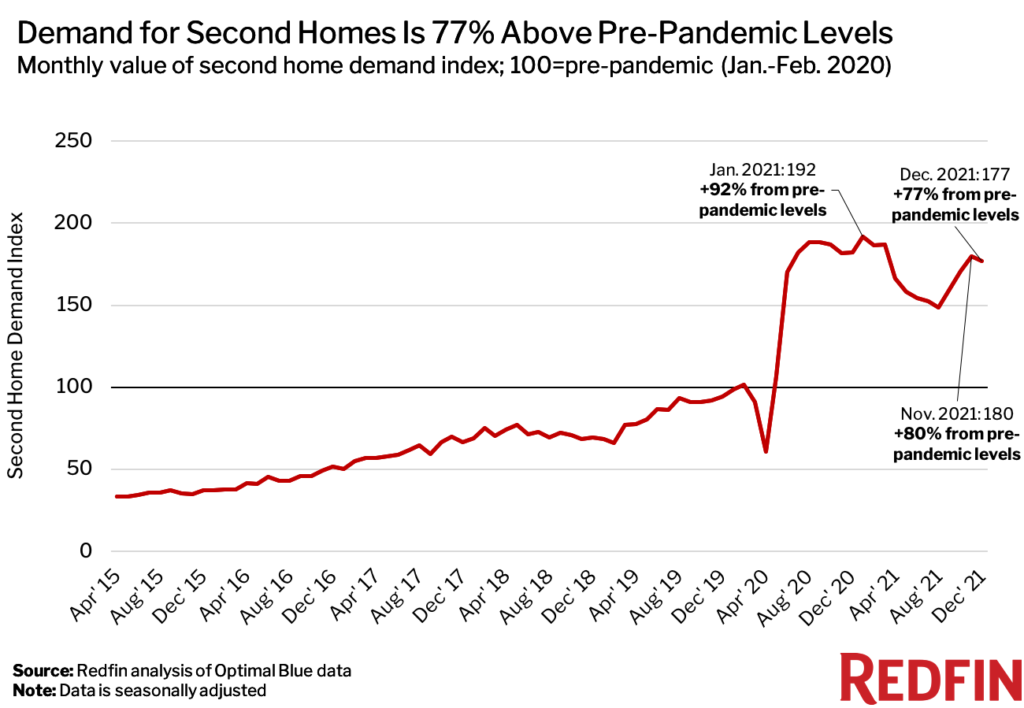Demand for second homes fell just slightly last month, but remained well above pre-pandemic levels as affluent buyers continued to take advantage of remote work and low mortgage rates.
Demand for vacation homes was up 77% from pre-pandemic levels in December. That’s slightly below the 80% increase in November and the record 92% gain in January, but up significantly from the 2021 low hit in August.

That’s according to a Redfin analysis of mortgage-rate lock data from real estate analytics firm Optimal Blue. Redfin created a seasonally adjusted index of Optimal Blue’s data to adjust for typical seasonal patterns and allow for simple comparisons of second-home demand during and before the pandemic. We define “pre-pandemic” as January and February 2020 and set the index for that period to 100. Any data point above 100 represents second-home demand that’s above pre-pandemic levels and any data point below 100 represents demand below pre-pandemic levels. This data is subject to revision.
A mortgage-rate lock is an agreement between a homebuyer and a lender that allows the homebuyer to lock in an interest rate on a mortgage for a certain period of time, offering protection against future interest-rate hikes. Homebuyers must specify whether they are applying to secure a mortgage rate for a primary home, a second home or an investment property. Roughly 80% of mortgage-rate locks result in actual home purchases.
Interest in second homes started to surge in mid-2020 as affluent Americans dispatched to vacation destinations, taking advantage of low mortgage rates and remote work. The slight slowdown in mortgage-rate locks from November to December is likely an effect of the holiday season and not indicative of dampening demand.
“The wealthy are still flush with cash and have access to cheap debt, which is why second-home purchases remain far above pre-pandemic levels,” said Redfin Chief Economist Daryl Fairweather. “While interest in second homes is stabilizing after the big boom in the second half of 2020 and the beginning of 2021, I expect demand to remain high well into this year. Remote work isn’t going anywhere and mortgage rates are still quite low.”


